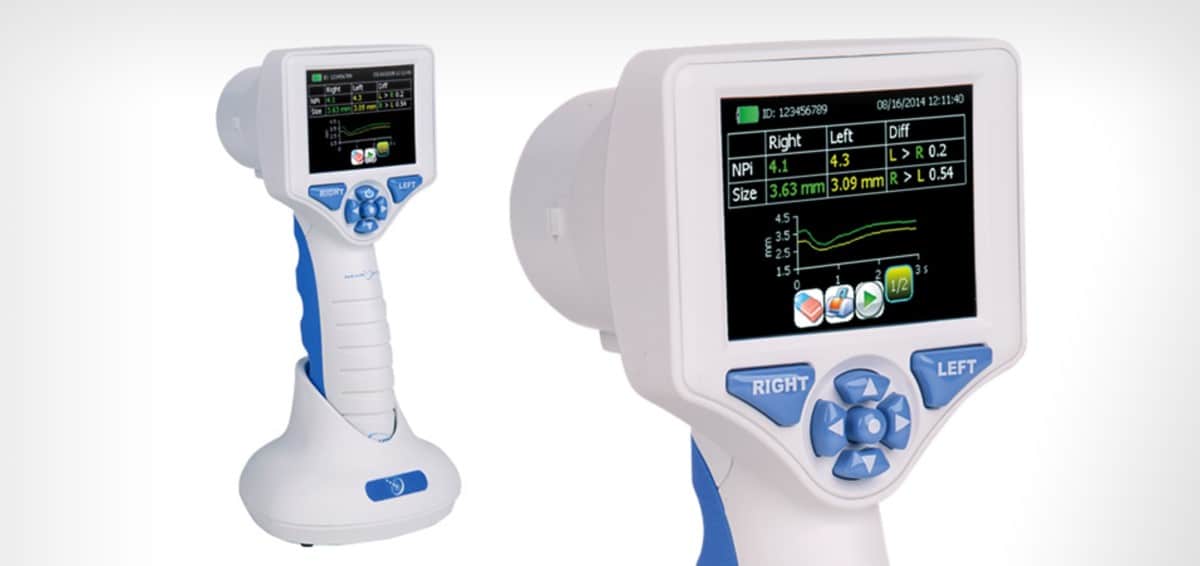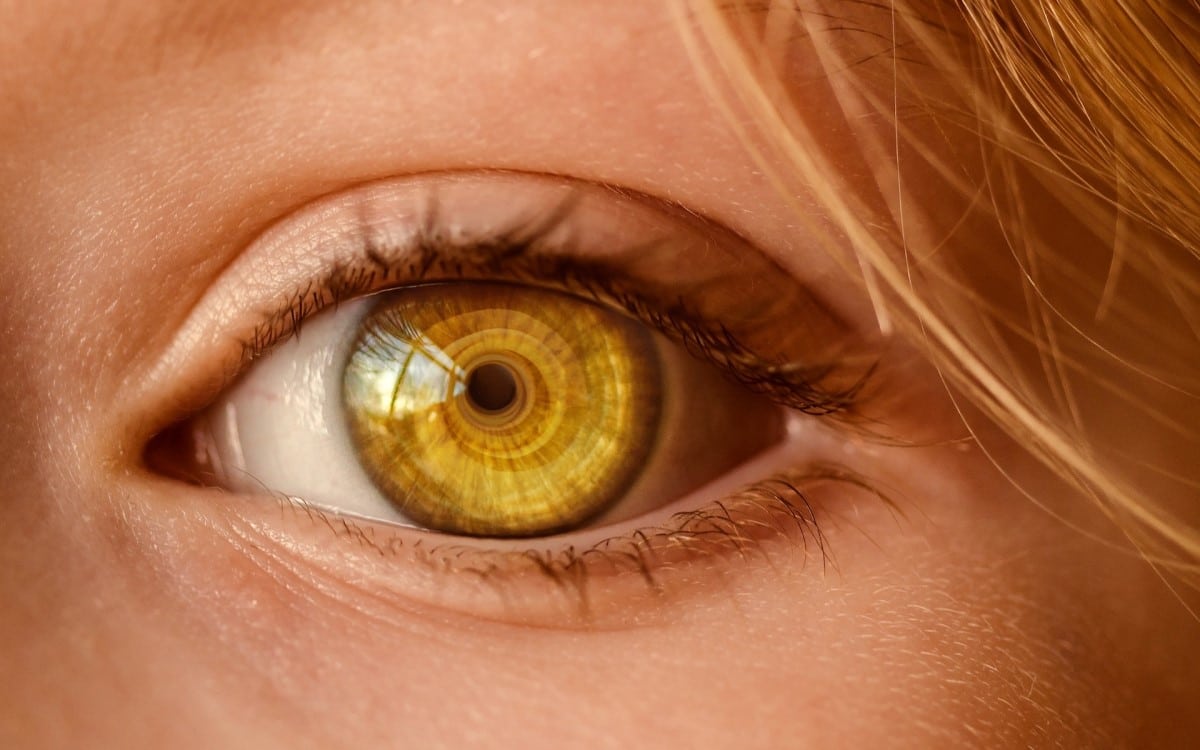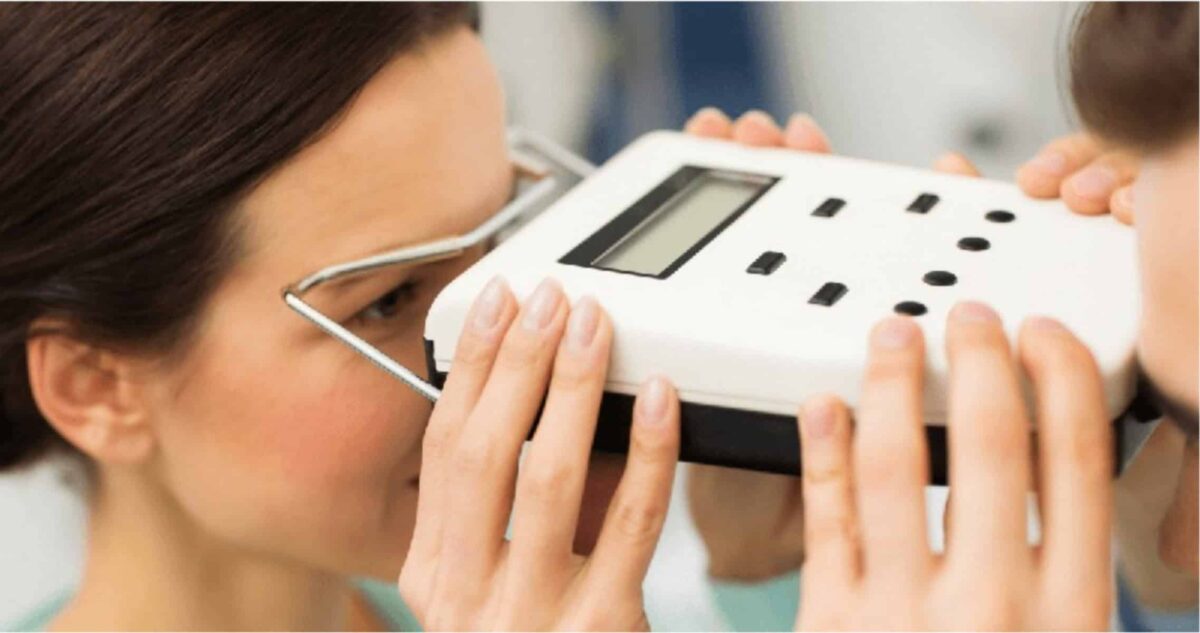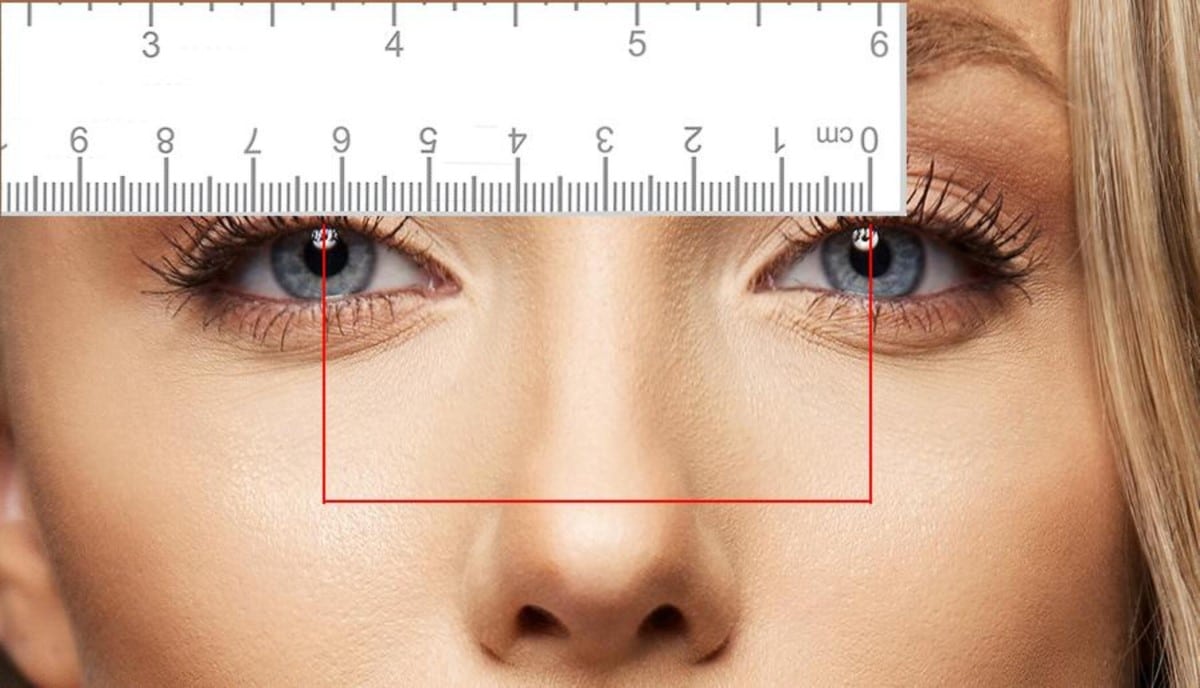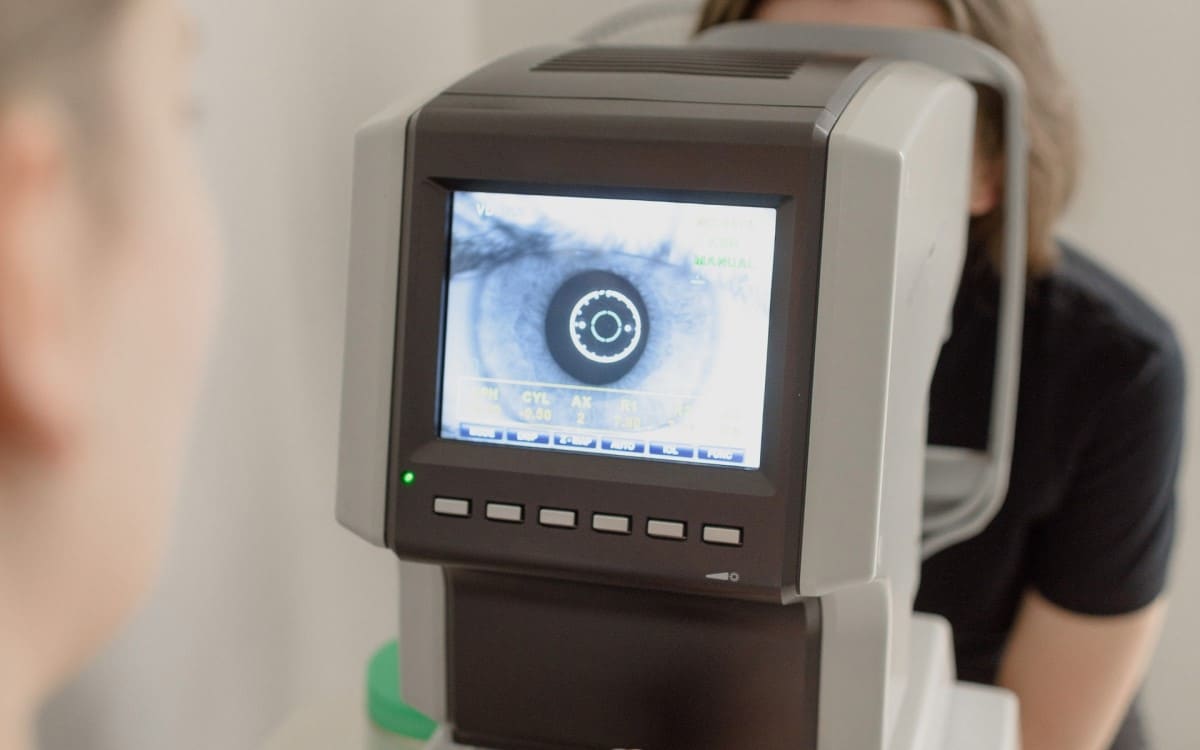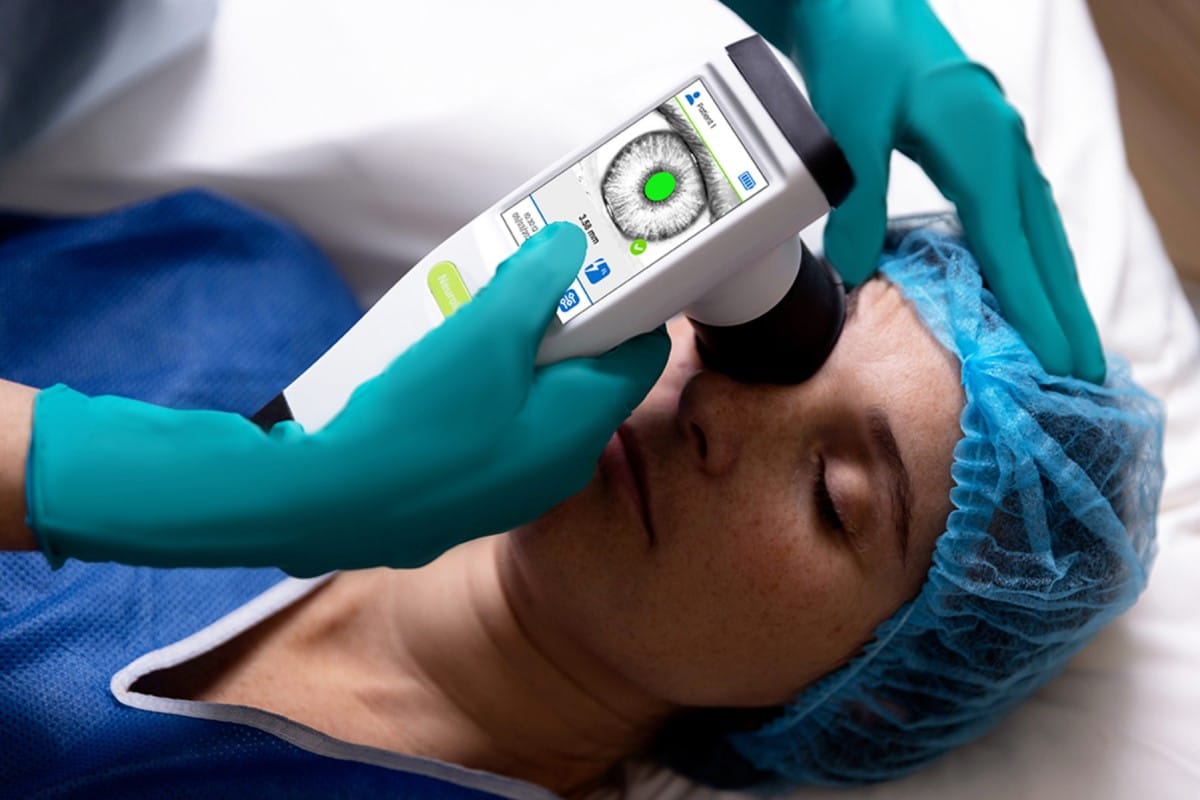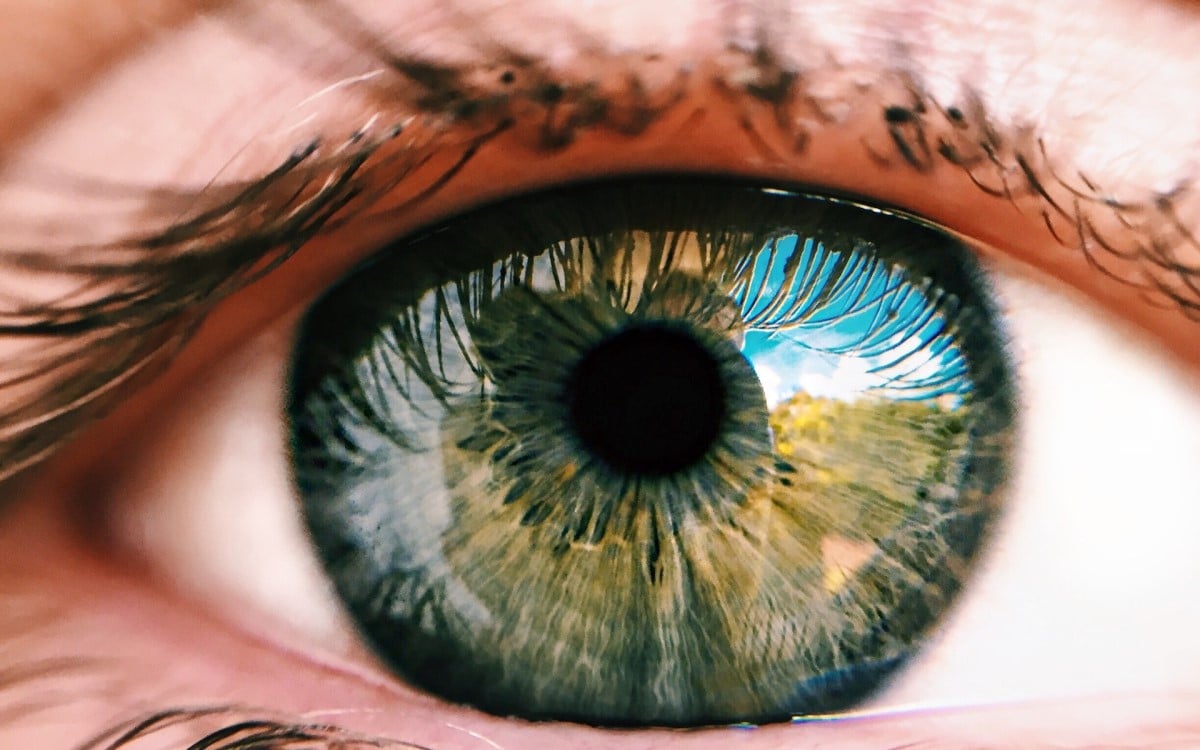What is a Pupilometer?
Have you ever wondered what eye doctors do when they shine that tiny light in your eyes? The tool they’re using is called a pupilometer.
In addition to measuring pupil size, a pupilometer can provide a wealth of information about a person’s eye health. Let’s take a closer look at this tool and the invaluable insights it can provide.
The pupilometer helps measure pupil size
A pupilometer, which comes in two main types—manual and automated—is a specialized device used to measure the size of a person’s pupils. Manual pupilometers require the user to visually assess the size of the pupil using a ruler or other measuring tool.
In contrast, automated pupilometers employ sophisticated technology to measure pupil size automatically and accurately. Pupilometers emit a beam of light into the eye, causing the pupil to constrict, and then measure the pupil size in millimeters.
When an eye doctor determines a person’s eye prescription, one of the factors they consider is the size of the person’s pupils. The size of the pupils affects the amount of light entering the eye and how it focuses on the retina. This, in turn, can impact a person’s vision, such as their ability to see in dim light or to focus on near or distant objects.
It can also be a clue to any underlying eye conditions. If a person’s pupils are consistently more prominent than the average size, it may indicate a potential medical issue that requires further evaluation.
How we make use of the pupilometer
In the medical field, pupilometry aids in various diagnostic purposes.[1] Alterations in pupil size may indicate neurological disorders such as Parkinson’s disease, Alzheimer’s disease, and multiple sclerosis. We can also use it to help assess traumatic brain injury, as changes in pupil size can indicate changes in intracranial pressure.
We can also use pupilometry in various non-medical settings. For example, pupilometers can measure cognitive load and mental effort.[2] By tracking changes in pupil size, researchers can identify when a task becomes more complex, helping to inform the design of user interfaces and other applications.
Pupilometry can do more than just measure your pupil size. It can also assess your arousal levels and emotional responses, offering valuable insights into human behavior. These insights can be particularly useful in marketing and advertising, helping to inform strategies and connect with audiences on a deeper level.
Other ways we can measure pupil size
When it comes to measuring pupil size, there are several techniques that eye care professionals and researchers use: direct observation, pupillography, and infrared pupillometry.
Direct observation of the pupils
Direct observation is the simplest and oldest technique for measuring pupil size. This method involves using a ruler or other measuring tool to assess the size of the pupil visually.
While this technique is straightforward and requires no special equipment, it is also prone to errors due to differences in lighting conditions and variability in the observer’s perception.
Pupillography uses light to track pupil response
Pupillography is a formal method that employs an infrared video camera and computer software to record and measure pupil reactions.
It helps determine what causes specific pupil reactions and allows for accurate measurements when preparing for some eye procedures.
Infrared pupillometry helps evaluate light reflex in the pupils
Infrared pupillometry primarily evaluates the pupillary light reflex. It also monitors neurological conditions like a traumatic brain injury. This technique can also offer valuable insights into the autonomic nervous system’s function, as fluctuations in pupil size frequently signal changes in arousal and stress.
Pupilometers aren’t a perfect solution
Pupilometers serve many applications, but there are some limitations and considerations that come with their use:
- AccuracyPupilometer accuracy may be affected by several factors. However, only accurate measurements can lead to correct diagnosis or treatment.
- Ambient lightThe ambient light in the environment can impact pupil size measurements. Controlled lighting conditions should be consistent during the assessment.
- Subject cooperationThe accuracy of the pupilometer depends on the subject’s cooperation and ability to focus on the target provided by the device. Distractions, discomfort, or anxiety may lead to inaccurate measurements.
- Eyelid interferenceIn some cases, subjects may have difficulty maintaining an open eye, or the eyelids may partially cover the pupil, leading to inaccurate measurements.
- Ocular conditionsCertain ocular conditions, such as corneal opacities, cataracts, or severe ptosis, can interfere with the accuracy of the measurements.
- Pupil size variationSome individuals naturally have smaller or larger pupils, which can lead to difficulty obtaining accurate measurements.
- Medications and substancesSome medications and substances, such as alcohol or illicit drugs, can influence pupil size and reactivity, potentially affecting the accuracy of the measurements.
Pupilometers aid us in understanding the human body and mind
The pupilometer is a fascinating tool that provides valuable insights into eye health, cognitive function, and emotional responses. As pupilometry technology advances, new and improved methods for measuring pupil size and interpretation are on the horizon.
In optometry, the pupilometer is a crucial tool that enables eye care professionals to provide the best possible care for their patients’ vision and overall eye health. Furthermore, pupilometry has many applications, providing valuable insights into the human body and mind.
Overall, the pupilometer is a fantastic tool that can provide eye care professionals, researchers, and anyone curious about their eye health with invaluable insights. It enables us to gain a deeper understanding of how our pupils react to different stimuli, shedding light on our cognitive function and emotional responses.
References
- “The use of pupillometry in joint and connective tissue diseases”, Bertinotti L, Pietrini U, Del Rosso A, Casale R, Colangelo N, Zoppi M, Matucci-Cerinic M. (2002)
- “Measuring cognitive load: performance, mental effort and simulation task complexity”, Haji FA, Rojas D, Childs R, de Ribaupierre S, Dubrowski A. (2015)

Written by:
Angie Garcia











